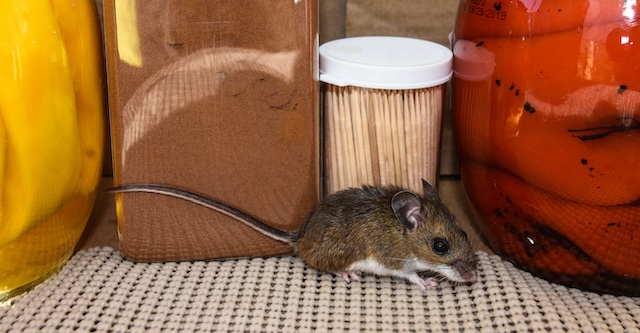In the complicated web of city and neighbourhood life, house mice stand out as tiny but dangerous residents. Their amazing ability to survive in the complex environments inside our homes shows how strong they are and how they can take advantage of even the smallest chances. Let’s venture into the world of house mice and look at how these little animals have grown strong by living with people.
1. Adaptability Dimensions: How to Get Around Tight Spaces
House mice, whose scientific name is Mus musculus domesticus, are small rodents that are very good at getting around in small areas. Their bodies are usually only two to four inches long, which lets them fit through gaps that look too small to be possible. The flexible rodents can get into all the cracks and crevices of our houses through holes in the walls, ducts, and vents.
2. Nocturnal Virtuosos: Doing Well at Night
One of the most important things that house mice have learned is to stay awake at night. When it gets dark and people aren’t around, mice come out from their hiding places to eat, explore, and interact with each other. This change to a mostly nighttime rhythm is a smart move that keeps them from running into potential predators. They use the cover of darkness to do well in areas where people are dominating.
3. Culinary Experts: Using a Range of Food Sources
House mice have a wide range of tastes, so they can easily survive on different foods. They eat grains, nuts, and sometimes small amounts of human food. Their ability to shift to different food sources has been very important in their successful integration into human habitats. They can use food storage areas, cupboards, and crumbs that we don’t notice to make our homes into little buffets.
4. Prolific reproduction: making sure the population stays the same
The ability of house mice to have babies is both interesting and difficult for people who live in homes. A pair of mice can have more than one litter a year, with more than one pup in each litter. This fast reproduction cycle makes sure that they will always be in our homes, changing a small infestation into a big problem if it isn’t taken care of right away.
5. Masters of Marking Their Territory: Making Scent Trails
House mice talk to each other by leaving behind invisible smell trails that have different uses. They set up complex communication networks by using urine and scent glands to mark their territory and routes. Learning about these smell trails helps us understand how they move around and plan their activities in our homes by giving us clues about how they behave.
6. Sharper Senses: Getting By With Better Sensory Acuity
To adapt to living with people, animals need to have very good senses, and house mice are very good at this. Their strong sense of smell helps them find food and find their way around, and their sensitive ears lets them know about possible dangers early on. They can live with people and stay safe because these enhanced senses help them do both.
7. Smart Nesting: Making Safe Havens
House mice are very smart because they build nests in our homes. These nests, which are usually built in secret places, give their young a safe place to live. Pest control workers need to know how these animals build their nests so they can go after these hiding places and keep infestations under control.
In conclusion, the story of how house mice have adapted to living in homes is a story of small animals with strong ways of staying alive. Their resourcefulness shows in how they can get around in small spaces, live in the dark, and find food for humans. Understanding these behaviours is a key part of taking effective and humane steps to get rid of pests, even though their adaptations may make things harder for homes. Despite all chances, the small but strong house mouse has made a home for itself in people’s homes, creating a delicate balance between getting along with them and having to take action when they cause problems.
